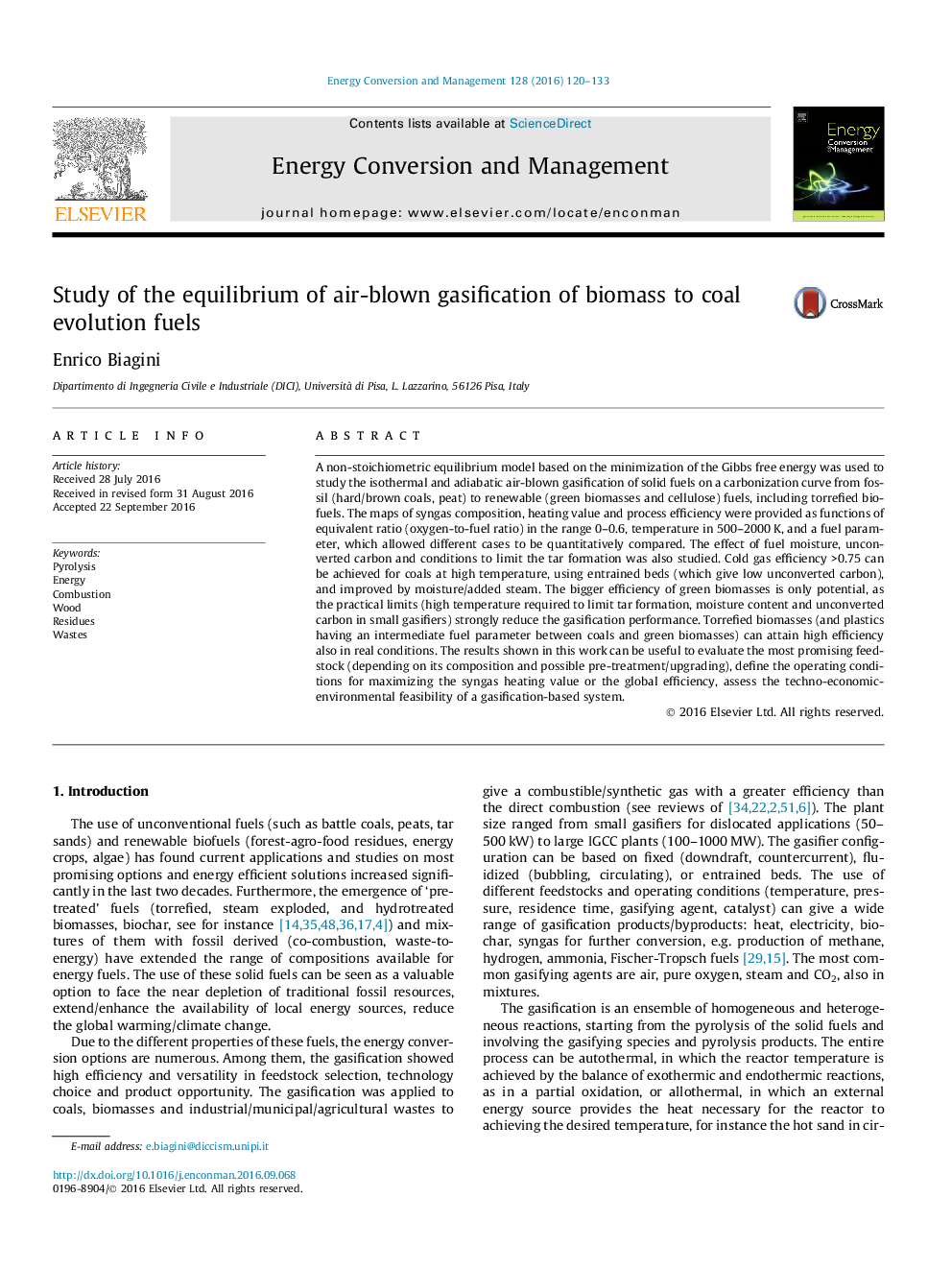| Article ID | Journal | Published Year | Pages | File Type |
|---|---|---|---|---|
| 5013357 | Energy Conversion and Management | 2016 | 14 Pages |
Abstract
A non-stoichiometric equilibrium model based on the minimization of the Gibbs free energy was used to study the isothermal and adiabatic air-blown gasification of solid fuels on a carbonization curve from fossil (hard/brown coals, peat) to renewable (green biomasses and cellulose) fuels, including torrefied biofuels. The maps of syngas composition, heating value and process efficiency were provided as functions of equivalent ratio (oxygen-to-fuel ratio) in the range 0-0.6, temperature in 500-2000Â K, and a fuel parameter, which allowed different cases to be quantitatively compared. The effect of fuel moisture, unconverted carbon and conditions to limit the tar formation was also studied. Cold gas efficiency >0.75 can be achieved for coals at high temperature, using entrained beds (which give low unconverted carbon), and improved by moisture/added steam. The bigger efficiency of green biomasses is only potential, as the practical limits (high temperature required to limit tar formation, moisture content and unconverted carbon in small gasifiers) strongly reduce the gasification performance. Torrefied biomasses (and plastics having an intermediate fuel parameter between coals and green biomasses) can attain high efficiency also in real conditions. The results shown in this work can be useful to evaluate the most promising feedstock (depending on its composition and possible pre-treatment/upgrading), define the operating conditions for maximizing the syngas heating value or the global efficiency, assess the techno-economic-environmental feasibility of a gasification-based system.
Related Topics
Physical Sciences and Engineering
Energy
Energy (General)
Authors
Enrico Biagini,
